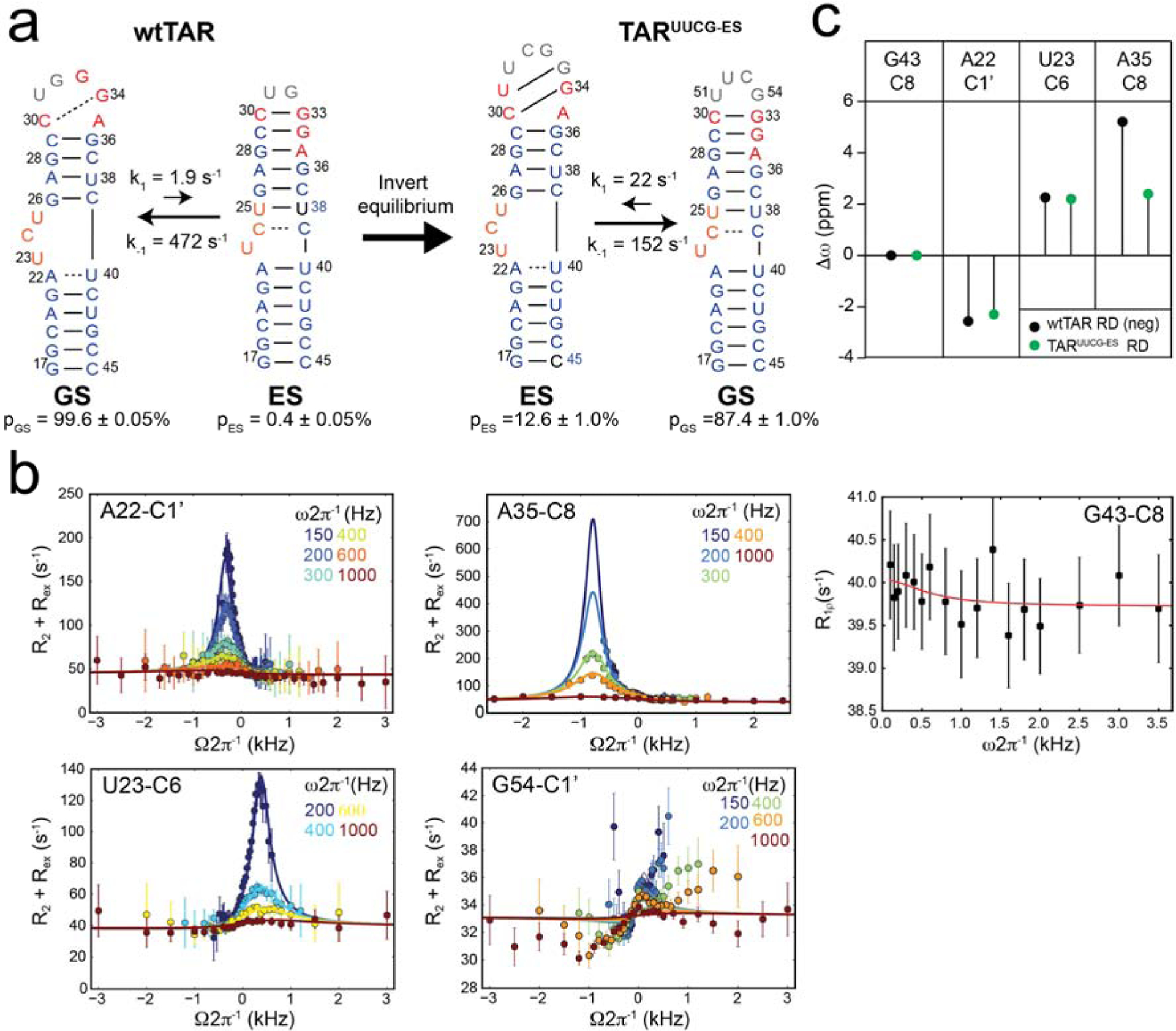Figure 1.

The ES-stabilizing mutant TARUUCG-ES experiences back exchange with a low-abundance and short-lived ES that has conformational features similar to the GS of wild-type TAR. a. Chemical exchange between the GS and ES in wtTAR and TARUUCG-ES. Shown are the populations (pGS and pES) of the GS and ES, respectively and the rate constants (k1 and k−1) for inter-conversion deduced from 2-state analysis of the R1ρ RD data. Residues are labeled according to the wtTAR GS secondary structure: stem (blue), bulge (orange), apical loop (red). Residues that differ between the two TAR variants are in gray. b. R1ρ RD profiles measured for TARUUCG-ES. Off-resonance profiles show the dependence of R2 + Rex on spinlock power (ω2π−1) and offset (Ω2π−1). Shown are the global fits (solid line) to a two-state model using the Bloch-McConnell equations assuming a two-state exchange process (Methods). On-resonance profiles show the dependence of R1ρ on spinlock power (ω2π−1). Error bars represent experimental error determined by propagation of error determined by Monte Carlo analysis of monoexponential decay curves and experimental signal to noise. Data was collected on a 600 MHz (1H frequency) spectrometer. Buffer conditions are 15 mM sodium phosphate, 25 mM sodium chloride, 0.1 mM EDTA, 100% D2O at pH 6.4 and 25 °C. c. Comparison of the difference between chemical shifts measured for the ES and GS (Δω = ωES - ωGS) in TARUUCG-ES (green) and the inverse (Δω = ωGS - ωES) in wtTAR (black) [13] using R1ρ RD NMR.
